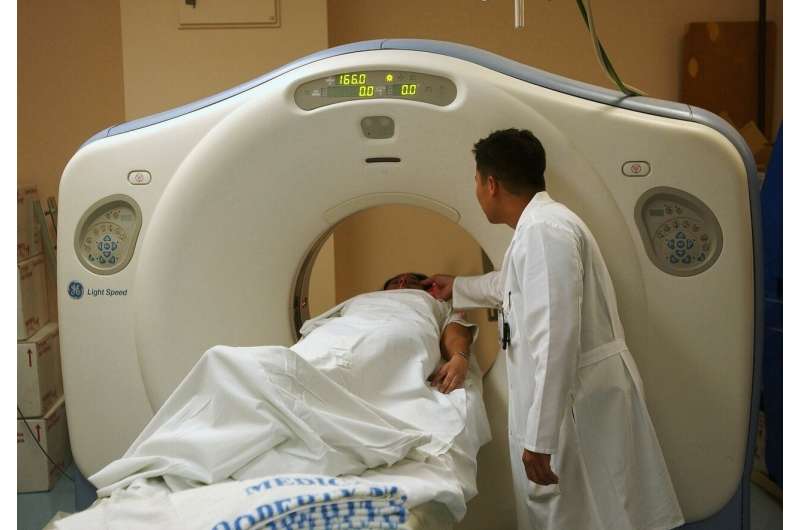This article has been reviewed according to Science X's editorial process and policies. Editors have highlighted the following attributes while ensuring the content's credibility:
fact-checked
peer-reviewed publication
trusted source
proofread
New rule for emergency departments to safely reduce use of CT scans after falls in older patients

How do emergency department staff determine whether older adults who have fallen need imaging? A new decision rule will help emergency department physicians determine which older adults need imaging for head injuries, describes new research in the Canadian Medical Association Journal.
With aging populations, emergency departments are managing an increasing number of older adults who fall; falling on level ground, like in one's house, is a common cause of a brain bleed. Computed tomography (CT) of the head is commonly used to assess patients who have fallen, but sending every patient who has fallen for a head scan is inefficient and costly.
"Overuse of CT in this population prolongs the emergency department visit, which has been shown to increase the rate of delirium while also diverting resources from other emergency patients," writes Dr. Kerstin de Wit, Queen's University, Kingston, Ontario, with coauthors from the Network of Canadian Emergency Researchers. "Furthermore, not all emergency departments have 24-hour on-site CT scanning facilities, meaning that some of these patients may be transferred to another center."
A team of emergency department physicians from across Canada and the United States developed the Falls Decision Rule, which can be used to identify patients for whom it is safe to forgo a head CT to rule out intracranial bleeding after a fall.
The researchers included 4308 patients aged 65 years or older from 11 emergency departments in Canada and the US who visited the emergency department within 48 hours of falling. The median age was 83 years, 64% were female, 26% took anticoagulant medication, and 36% took antiplatelet medication, both of which increased the risk of bleeding.
The rule, which, if used, would avoid head CT in 20% of the study population, can be applied to all older adults who have fallen, whether or not they sustained a head injury or can recall the fall.
This new rule complements the widely used Canadian CT Head rule, which applies to patients with disorientation, amnesia or loss of consciousness.
More information: Kerstin de Wit et al, Derivation of the Falls Decision Rule to exclude intracranial bleeding without head CT in older adults who have fallen, Canadian Medical Association Journal (2023). DOI: 10.1503/cmaj.230634




















